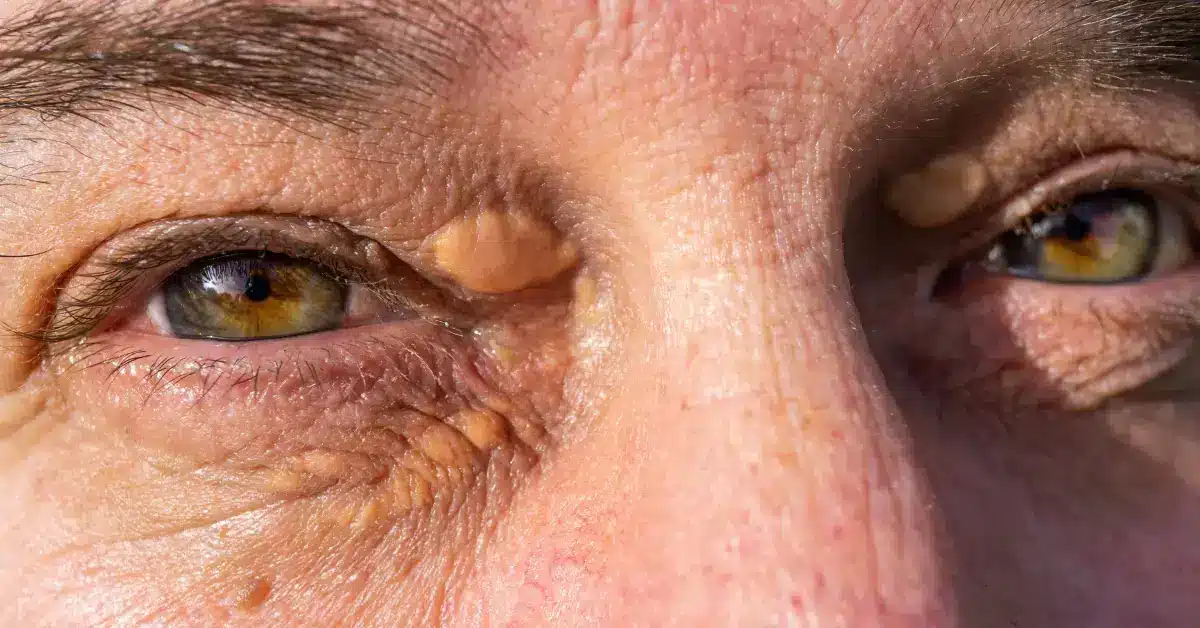Exploring Cerulean Cataract: Causes, Symptoms, and Treatment Options
Cerulean Cataract is a blind area that develops in the eye’s lens, having a bluish or whitish tint.
Due to the bluish tint, it is also known as a blue dot cataract.
It is a rare and uncommon disease.
Cerulean cataracts may be present from birth or may develop in early childhood.
This type of cataract can affect both eyes and is progressive in nature.
Infants can be asymptomatic but may be visually impaired from birth or develop amblyopia.
Cerulean cataract can be caused by some genetic changes or can be inherited.
According to World Health Organization, cataracts are one of the leading causes of blindness worldwide.
Cataracts account for more than 51 percent of blindness throughout the world.
Continue reading to know more about the symptoms, causes, and treatments of cerulean cataract.
Signs and symptoms
The condition of cerulean cataract can be asymptomatic. It can be from birth or occur at a very young age, making it hard to diagnose.
Opacities that surround or occur in the lens equator of the eye refers to Coronary cataract.
A distinct blue tint will be present all over the cortex of the lens.
Some of the other symptoms may include
- Photophobia: The individual can get sensitive to bright light, causing eye pain
- Colored halos: A person can see bright circles or rings around the source of the light
- Nyctalopia: Also known as night blindness, a person loses his ability to see in dim lighting and dark environment in this condition
Causes
Cerulean cataract is a genetic disease caused by mutation of one or more genes.
CRYBB2, CRYGD, MIP, and MAF are some genes known to cause this condition.
It is a congenital disease and may be present in infants since childhood.
A cerulean cataract is a type of autosomal dominant inheritance. Individuals can get it from their parents or family.
Diagnosis

As discussed above, the cerulean cataract is asymptomatic. It is hard to diagnose it with the bare eye.
It is only diagnosable using slit lamp examination.
In this test, a bright light is focused on the eye lens to look for any deformity or disease.
Cerulean cataract will have blue and bright suspended tints when light passes through the lens.
Treatment
Cerulean cataract is a rare disease, and its treatment is still unknown.
There is no way to stop development and slow the progression of this disease.
The only treatment option available is cataract surgery.
The surgery options available are SICS (Small Incision Cataract Surgery) and phacoemulsification.

SICS (Small Incision Cataract Surgery)
Small incision cataract surgery (SICS) is a surgery to remove a cloudy lens from the eye and replace it with an artificial lens.
This modern technique uses a small incision (typically 5-6mm) in the eye instead of the larger incisions used in traditional cataract surgery.
During this surgery, the surgeon makes a small cut in the eye and removes the cloudy lens through that space.
Advantages of SICS include faster healing, less discomfort, and lesser side effects.
SICS is performed using local anesthesia and is believed to be a safe and effective cataract treatment.
However, it may not be suitable for everyone. It is essential to discuss the advantages and risks.
Phacoemulsification
During phacoemulsification, a small cut is made in the cornea. Then, an ultrasonic probe is inserted into the eye.
The probe uses high-frequency sound waves to break the cloudy lens into small pieces.
These broken pieces of the lens are then removed through suction.
After the cataract is removed completely, a new artificial lens is placed in the eye to restore clear vision.
Phacoemulsification is a safe and effective procedure with a high success rate.
It is typically performed on a patient after using local anesthesia.
The recovery time is relatively short, and most patients return to their normal activities after a few days of the procedure.
Prevention
Cerulean cataract is a rare genetic disorder that causes blue or white discoloration of the lens in the eye.
This condition can lead to vision impairment.
Unfortunately, there is no specific way to prevent cerulean cataracts, as it is a genetic condition.
The progression of cerulean cataracts is very slow.
You may not even see any significant changes until the age of 20 to 30 years.
But there are various treatment options available for cerulean cataracts.
Conclusion
In conclusion, cerulean cataract is a rare condition affecting the eye’s lens, causing it to turn blue.
This can be caused due to inheritance or genetic changes.
Symptoms may include colored halos, night blindness, and light sensitivity.
There is only one treatment for cerulean cataract, which is surgery.
In surgeries, the affected lens is removed, and an artificial lens is placed in the eye.
The eyes of the patient become very healthy, and complete vision comes to the affected eye.
Overall, treating cataracts as soon as possible is important, or it may lead to complete blindness.
Frequently Asked Questions
Do cerulean cataract change color perception?
No, cerulean cataract cannot change color perception. In this condition, a blue tint floats all over the lens. But it doesn’t change the color perceptions.
What is a cerulean cataract?
A cerulean cataract is also known as a blue dot cataract. These are characterized by blue and white tints in the lens. This is a genetic or hereditary type of cataract. This can be present even in a newborn baby.
What causes cerulean cataracts?
A common cause of cerulean cataracts is a faulty gene passed to a child from their parents. Even some genetic changes can also cause cerulean cataracts.
WowRx uses only high-quality sources while writing our articles. Please read our content information policy to know more about how we keep our content reliable and trustworthy.






